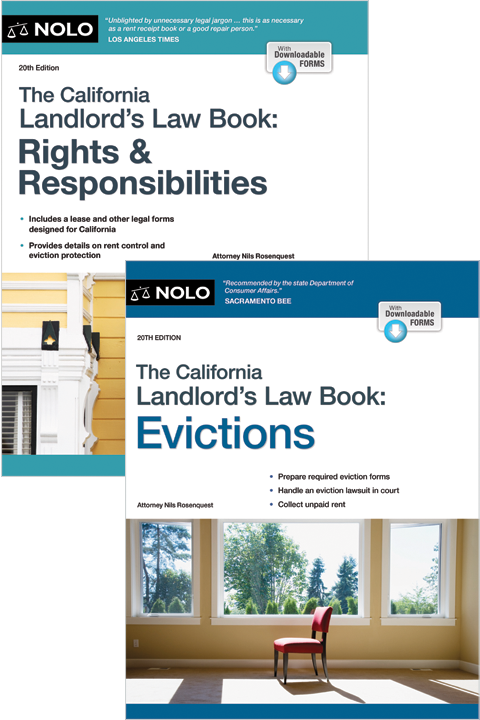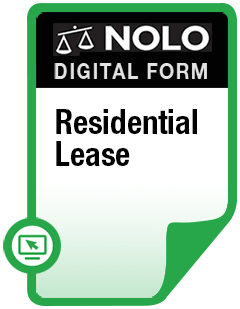A guide to Ohio security deposit rules, eviction notices, tenant screening requirements, required landlord disclosures, and more.
Understanding Ohio landlord-tenant law is essential for property owners and renters across the state. Here's a breakdown of what you need to know about Ohio security deposits, late rent, evictions, and much more.
Rental Application and Tenant Screening Laws
Ohio law is generally permissive regarding tenant screening processes and fees, placing few limitations on what information a landlord can request.
Application Fees
There is no law in Ohio that prohibits landlords from charging an application fee.
Tenant Screening Reports
A tenant screening report is a credit report, criminal background report, employment history report, or rental history report that a landlord uses to determine whether an applicant would be an acceptable tenant. Ohio landlords are free to charge reasonable amounts for tenant screening reports.
Criminal History Screening
Ohio does not have a state law prohibiting landlords from considering applicants' criminal histories. However, landlords must still be careful. When landlords consider applicants' criminal history, they must do so in a consistent, nondiscriminatory manner. If a landlord's practice of considering criminal history has a discriminatory effect—for example, if the landlord asks only applicants of a certain color for criminal history information—the landlord is engaging in illegal discrimination and can be subject to penalties. Also, landlords can reject applicants only for past convictions that are directly related to the application—in other words, convictions that have a negative bearing on a legitimate business concern of the landlord.
Fair Housing Laws
All landlords need to follow federal and state antidiscrimination laws when screening applicants for a rental. Federal fair housing laws prohibit landlords from discriminating on the basis of:
- race or color
- religion
- national origin
- familial status or age (includes families with children under the age of 18 and pregnant women)
- disability or handicap, and
- sex (includes gender identity and sexual orientation).
Ohio's fair housing law also prohibits discrimination based on military status and ancestry. (Ohio Rev. Code § 4112.02 (2025).)
Security Deposit Laws
Ohio does not have a statutory limit on how much landlords can charge for a security deposit, so landlords can charge as much as the market can bear.
Interest Required on Security Deposits
If a landlord charges more than the greater of $50 or one month's rent as a security deposit, and the tenant occupies the rental for six months or more, the deposit amount exceeding the limit must bear interest at 5% per year. The interest must be computed and paid annually to the tenant. (Ohio Rev. Code § 5321.16 (2025).)
Deductions, Itemization, and Return of Security Deposits
Ohio landlords can apply the security deposit only toward unpaid rent and damage to the rental that goes beyond normal wear and tear. The landlord must provide the tenant with a written notice itemizing any deductions along with the remaining balance due (if any) within 30 days of the end of the tenancy.
If the landlord doesn't return the deposit as required, the tenant is entitled to damages in an amount equal to the amount wrongfully withheld and reasonable attorneys' fees. (Ohio Rev. Code § 5321.16 (2025).)
Late Fees, Disclosures, and Other Rent Rules
In Ohio, rent is due on whatever day the landlord and tenant agree to.
Grace Periods and Late Fees
Ohio doesn't require landlords to give tenants a grace period for paying rent. However, a landlord and tenant can agree in the lease or rental agreement that there will be a grace period.
Ohio landlords can charge late fees, and there is no cap on how much they can charge. Most judges won't enforce unreasonable late fees, though. In general, a late fee will be considered reasonable as long as it doesn't exceed 4%-5% of the rent and has an upper limit.
Required Landlord Disclosures
In many states, landlords must disclose specific information to tenants and potential tenants. Ohio landlords must disclose information about the property owner's identity. Specifically, every written rental agreement must contain the name and address of the owner and the name and address of the owner's agent, if any. If the owner or the owner's agent is a corporation, partnership, limited partnership, association, trust, or other entity, the address must be the principal place of business in the county in which the residential property is situated. If there is no place of business in such county, then its principal place of business in this state must be disclosed, and must include the name of the person in charge. (Ohio Rev. Code § 5321.18 (2025).)
Rent Increases
Ohio landlords can't raise the rent during the term of a lease unless the lease specifically allows them to do so. For month-to-month tenancies, there's no required notice period to raise rent, but most landlords will give tenants 30 days' written notice.
The Landlord's Duty to Provide Habitable Rentals
Landlords must provide tenants with a habitable rental throughout the tenancy. This duty is often referred to as the "implied warranty of habitability."
In Ohio, landlords must:
- Comply with codes: Follow all applicable building, housing, health, and safety codes that materially affect health and safety.
- Make repairs: Do whatever is reasonably necessary to put and keep the premises in a fit and habitable condition.
- Look after common areas: Keep all common areas safe and sanitary.
- Maintain systems: Keep all electrical, plumbing, sanitary, heating, ventilating, and air conditioning fixtures and appliances in good and safe working order.
- Provide Water and Heat: Supply running water, reasonable amounts of hot water, and reasonable heat at all times (unless the heat and hot water are supplied by an installation under the exclusive control of the tenant and supplied by a direct utility hook-up).
(Ohio Rev. Code § 5321.04 (2025).)
Tenant Remedies
When a landlord breaches the implied warranty of habitability, the tenant must provide notice to the landlord with a description of the problem and a request that the landlord fix the condition within 30 days. If the landlord fails to act, the tenant may do one of the following:
- Deposit rent with the clerk of the court rather than paying it to the landlord.
- Apply to the court for an order directing the landlord to remedy the situation.
- Terminate the rental agreement.
(Ohio Rev. Code § 5321.07 (2025).)
Rules About Landlord's Access to Property
Tenants are entitled to quiet enjoyment of their property, meaning that the landlord can't enter without notice or permission unless there's an emergency. In Ohio, landlords must give tenants "reasonable notice" of their intent to enter, and must enter only at reasonable times. 24 hours' notice is considered reasonable in most situations. (Ohio Rev. Code § 5321.04(8) (2025).)
Tenants can't unreasonably withhold consent for the landlord to enter to inspect, make necessary repairs, or show the rental to prospective tenants or purchasers. (Ohio Rev. Code § 5321.05 (2025).)
Termination and Eviction Rules
Ohio landlords must follow very specific rules and procedures to terminate a tenancy and then, if necessary, file an eviction lawsuit.
Ending a Periodic (Month-to-Month) Tenancy
Either the landlord or the tenant can end a month-to-month tenancy for no reason by giving the other party written notice of termination at least 30 days before the rent is due. (Ohio Rev. Code § 5321.17 (2025).)
Lease Termination for Cause
A landlord who wants to evict a tenant before the lease or rental agreement has expired must have cause—in other words, a legally valid reason to terminate the tenancy. Before the landlord can file an eviction lawsuit in court, they must give the tenant one of the following notices:
- 30-Day Notice to Cure or Quit. If a tenant fails to fulfill a duty under the lease affecting health and safety, the landlord can terminate the tenancy by giving the tenant notice of the act and stating that if the tenant doesn't remedy the situation within 30 days, the tenancy will terminate. (Ohio Rev. Code § 5321.11 (2025).)
- 3-Day Notice. The landlord can terminate the tenancy with a 3-day unconditional notice to quit when the tenant fails to pay the rent, violates a term of the lease, or is dealing drugs on the property. The landlord does not have to give the tenant the opportunity to fix the situation. However, if the landlord accepts rent at some point after the termination date, the landlord waives the right to file an eviction. Landlords should be sure to include in the notice the language required by statute. (Ohio Rev. Code §§ 1923.02, 1923.04 (2025).)
If the tenant doesn't take the action required by the notice or move out before the termination deadline, the landlord can file an eviction lawsuit in court.
Illegal Evictions
Under Ohio law, landlords can't take self-help measures to evict a tenant. For example, a landlord can't exclude the tenant from the rental or willfully cut services such as heat, running water, electricity, gas, or other essentials. Tenants have the right to sue landlords who use illegal self-help measures, and might be entitled to reasonable attorneys' fees in the lawsuit. (Ohio Rev. Code § 5321.15 (2025).)
Where to Find Ohio Landlord-Tenant Laws
If you want to read the text of a law itself, visit the website of the Ohio Legislative Service Commission.
Local Ordinances Affecting Ohio Landlords and Tenants
Cities and counties often pass local ordinances, such as health and safety standards, noise and nuisance regulations, and anti-discrimination rules that affect landlords and tenants. Many municipalities have websites—just search for the name of a particular city in Ohio and then do a search when you're on the site.
Municode is a good source for finding local governments online. Also, your local public library or office of the city attorney, mayor, or city or county manager can provide information on local ordinances that affect landlords and tenants in Ohio.
Federal Landlord-Tenant Laws and Regulations
Congress and federal agencies, such as the U.S. Department of Housing and Urban Development (HUD) and the U.S. Environmental Protection Agency (EPA), have enacted laws and regulations that apply to the landlord-tenant relationship in Ohio. These laws and regulations address topics such as discrimination and landlord responsibilities to disclose environmental health hazards, such as lead-based paint.
The U.S. Code is the starting place for most federal statutory research. It consists of 53 separate numbered titles, each covering a specific subject matter. Most federal regulations are published in the Code of Federal Regulations ("CFR"). To access the U.S. Code and Code of Federal Regulations online, see the Library of Congress's legal research site.
Talk to a Lawyer
Need a lawyer? Start here.
How it Works
- Briefly tell us about your case
- Provide your contact information
- Choose attorneys to contact you
Ready to create a lease?
- Briefly tell us about your case
- Provide your contact information
- Choose attorneys to contact you



